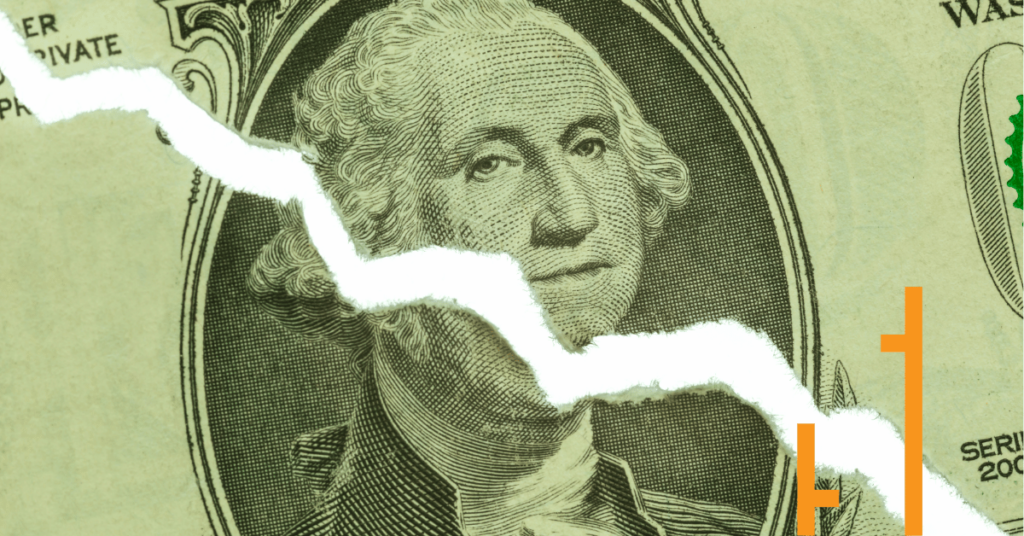
Are we witnessing the death of the dollar?
In 1944, in response to a collapsing global market system, the Bretton Woods system pegged the US dollar to gold and all other currencies to the US dollar. For multiple generations, every global economy has thus been anchored to the United States. Even since Richard Nixon removed the gold backing from the USD in 1971, creating a fiat currency, the US dollar has remained unquestionably the standard of investment in the globalised market system. The dollar was pegged not to gold, but to confidence in the stability of the US financial system. Oil is priced in USD, trade deals are negotiated in USD, and central banks stockpile US treasury bonds.
Erosion of Trust
However, faith in this system has been eroding at an accelerating rate. The weaponization of the US-led financial system, cutting off rivals from payment systems and suspending reserves, has bred hesitancy around the system. The Trump administration’s haphazard and at times random tariff application has further diminished the stability of the system. Domestically, ballooning debt has led to downgrades of the country’s credit rating across the board, raising questions about long-term fiscal stability.
The Rise of Alternatives
Amidst the uncertainty, investors have begun a gradual migration away from US Treasury bonds, which have been the standard safe haven investment for generations. While some central banks have been moving to foreign bonds, many have been raising exposure in ‘alternative’ assets such as gold, which has now surpassed the euro to become the second-largest reserve asset.
Bitcoin, the decentralised finite-supply digital asset that has existed for less than two decades, increasingly presents a solution to the politically influenced US dollar. The asset has been progressively legitimised as an alternative asset by large investments from private organisations, as well as through government adoption. El Salvador notably keeps a national reserve of Bitcoin, while Bhutan has established hydroelectric operations to supply power for Bitcoin mining.
The adoption of Bitcoin isn’t limited just to global players looking to offset US dollar risk, however, but is being increasingly pushed by the Trump administration themselves. In March 2025, the Trump Administration announced a strategic Bitcoin reserve. More recently, an executive order, “DEMOCRATIZING ACCESS TO ALTERNATIVE ASSETS FOR 401(K) INVESTORS,” laid the groundwork for US citizens to invest directly in cryptocurrencies through their retirement funds. This move unlocks trillions of dollars of retirement capital for investment in the crypto industry, which otherwise would have been off limits. The rise of Bitcoin as an alternative asset can also be seen in the rapid adoption of Bitcoin spot ETFs, which currently have hundreds of billions of dollars invested, although they were only approved for listing in January 2024. While all of this increases the legitimacy of cryptocurrencies, it could have the additional effect of shifting further from the US dollar. Even if a strategic cryptocurrency reserve does not directly influence investors away from the dollar, the shift in perception for Bitcoin may do so. Perception drives confidence, and confidence fosters the stability that encourages adoption of global reserves. But perhaps this is no coincidence, as a weaker US dollar means lower domestic manufacturing costs for the US, a desire for which the Trump administration has made no secret.
A Slow Rebalancing
The dollar’s dominance has persevered through many challenges, from the launch of the euro to the GFC and the disruptions of the global pandemic. The fundamental truth of the matter is that the deep liquidity and sheer inertia of the US dollar mean it is not going away any time soon. What instead appears to be unfolding, at least for the time being, is a slow shift away from the US dollar and US dollar-based investments to alternative assets such as gold and cryptocurrencies such as Bitcoin. This gradual shift away is likely to continue until the US government can re-establish trust and stability within its financial systems. Though, amidst the heightening polarisation of US politics, US politicians don’t appear to be interested in finding a solution to fiscal matters such as the ever-ballooning debt crisis.
I don’t believe we’ll be seeing any major reordering or collapse of the US dollar-backed financial system any time soon, but the tide will continue to shift towards alternate assets such as gold and bitcoin. Our All Weather strategies continue to invest in a mixture of gold, bitcoin, US shares, and global shares to best position ourselves for growth in an uncertain environment.
You can access our strategies signals and returns on our 14 day free trial.

